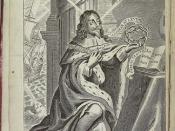During Charles 11 year rule without parliament, the levying of ship money bought the government close to success. For Charles' opposition such as John Pym this was disastrous, as they wished to use the king's financial difficulties to restrain him. They were even considering leaving the country as a way out. For Charles one of the major incidents that changed this was when he tried to enforce the English prayer book on the Church of Scotland in 1637.
Presbyterianism in Scotland was like a thorn in Charles side. He was the ruler of the three kingdoms, England, Scotland and Ireland, and he wished to rule these three uniformly in government and more importantly religion. Unlike his predecessor James ÃÂ, Charles lacked in patience and common sense. For when James had tried to reform the Scottish church it had been met with much resistance and it was obvious it would take time for the Scots to agree to too much at once.
Charles however ignored this and in 1637 when the Anglican prayer book was read at St Giles cathedral major riots ensued. In many ways this incident emphasizes Charles belief in divine right and thus all should do as he says as he speaks for God. This incident however led to an alliance between the Scots leading noble men and the clergy. They signed a covenant with the aims to defend the church against Anglicanism and Episcopalism. It was Charles reaction to this incident that escalated the problem. He declared that all the signatories were rebels and created an army to fight against them. However the army was under funded and it led to an embarrassing defeat for Charles. This whole episode was bad for Charles for not only did it enhance his financial difficulties but did nothing for his...


![Image taken from page 242 of 'The Works of King Charles I., both civil and sacred. With the life and reign of that Prince [by Peter Heylyn]'](https://s.writework.com/uploads/4/43518/image-taken-page-242-works-king-charles-both-civil-and-sacre-thumb.jpg)